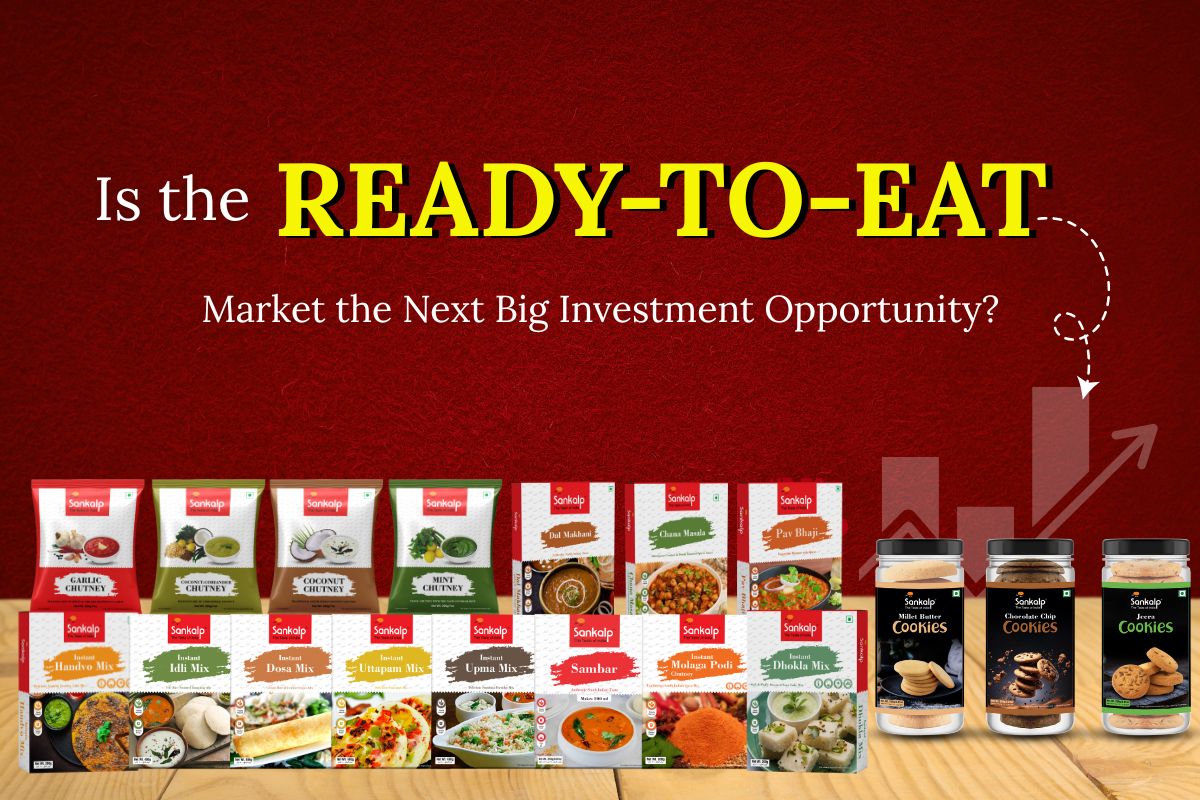
With passing time and owing to busy lifestyles, more and more people are choosing quick, easy meals. So, is the Ready-To-Eat Market the Next Big Investment Opportunity? A big yes! In 2024 alone, the global RTE market was worth over $200 billion. And the Ready-to-Eat (RTE) Market Investment is only expected to keep growing by 6–7% each year until 2030. Healthier options are also becoming popular. Asia is growing fast, while North America leads in sales. Online shopping makes the RTE food industry grow quite fast. Big companies are expanding their products. Costs can rise, but demand stays strong. Overall, the investment in the ready to eat meals (RTE) market is going to bring good returns in the long run.
Table of Contents
ToggleCities are growing. People have less time and space to cook. Small kitchens, late hours and traffic change food habits. Food industry investment trends indicate that the Ready-to-Eat (RTE) Market fits very well into this fast life. More nuclear families and working couples choose convenience. Eating out every day is costly. RTE gives hot meals in minutes. It suits hostel life, bachelor homes and busy families. Even in Tier 2 and 3 cities, RTE is rising. Ready meals solve that daily problem without needing a full kitchen.
Today’s consumers want speed, but not at the cost of taste. Indians love variety—RTE gives biryani, rajma, pasta and more. There’s demand for both desi and global dishes. People also want healthier options. Brands now offer millet-based, low-oil and preservative-free packs. Students, travellers and working professionals are buying more. Veg and vegan RTE options are rising too. So with the Asian or Indian ready-to-eat food market, the focus is shifting from just “quick food” to “good food, fast.” Trust matters now.
Food tech makes RTE possible. Vacuum sealing, retort packaging and cold chains keep food fresh longer. Machines pack with hygiene. QR codes share ingredients and origins. Cloud kitchens support regional RTE brands. Distribution is faster. Smaller companies now compete with big ones. Indian ready-to-eat food markets and meals can even reach remote villages in days. Microwave packs make reheating easy. All this tech ensures food stays safe, tasty and quick.
India has a young population. Many live alone or move for work. Students, bachelors and first-jobbers are top RTE buyers. Women in jobs also rely on ready meals. Older people buy RTE for ease. Migrants look for home-style flavours in packs. Regional meals like Pongal, Dal Khichdi or Nihari are in demand. RTE connects people to their roots. It serves all age groups—young, old, working or retired. As families shrink and life speeds up, RTE fits every lifestyle.
India’s RTE food market is growing fast. In 2023, it was valued at over ₹4,000 crore. By 2028, it is expected to double. Urbanisation, busy lives and higher incomes are the key drivers. Southeast Asian markets show similar trends because:
People try RTE once—and come back for more. Repeat purchase rates are high, especially in metro cities. Students, working professionals and even families keep RTE in their kitchens. Many households now stock RTE for travel, emergencies or lazy days. This happens for a reason:
From biryanis to noodles, soups to khichdi—RTE covers it all. Indian regional dishes are now available in ready form. Health-focused options like millet-based or low-oil meals are rising. Vegetarian, non-vegetarian and even vegan SKUs are expanding. This diversity reduces risk for investors – a key reason for higher investment in ready to eat meals markets. Also, companies can target many groups—youth, health-conscious, elderly and travellers — all at the same time. RTE is not one-size-fits-all. It’s evolving fast and wide. Constant innovation keeps consumers engaged.This makes it more resilient to changing food trends.
Indian ready-to-eat food market RTE products are easy to scale. With better cold chains, modern warehousing and cloud kitchens, companies can reach more cities quickly. With tech, logistics and demand aligning—scaling Ready-to-Eat (RTE) Market Investment is not just possible, it’s profitable. How does that work?
RTE in India spans gravies, rice meals, parathas, noodles and frozen snacks. Traditional favourites like dal makhani and pulao lead sales. Consumers now look for easy meals without compromising on taste. Urban diets demand healthier RTE options—millet, less oil and preservative-free labels. Younger buyers also seek global flavours with Indian spices. Packaging and trust in brands matter more than price alone.
Government support and lower production costs make Indian RTE competitive globally.Indian RTE exports are growing steadily, especially in the US, UK, Middle East and Australia. NRIs seek comfort foods from home. Asian cuisines are also gaining global popularity. Shelf-stable packaging, longer shelf life and halal certification are key.
The Indian ready-to-eat food market has MTR, Haldiram’s and ITC dominating the retail shelves. And then you have trusted brands like SANKALP FOODS that offer franchise deals too! Cloud kitchens and direct-to-consumer models help startups grow. Retail chains now back all private-label RTE meals too.
Ready-to-Eat (RTE) Market Investment is no longer just convenient—it’s aligning with health trends.FSSAI ensures food safety. Schemes like “Make in India” and the PLI boost food processing. Brands reformulate products with less fat, salt and artificial ingredients.
Indian and Asian brands are catching up fast with global food tech trends. So what are you waiting for? Tap into Indian RTE market growth and top food industry investment trends now!
On all orders above ₹1000
Delivery across India
Razorpay / MasterCard / Visa
Online Support
Sankalp Packaged Foods
17th Floor, Sankalp Square 3-A, Taj Skyline, Sindhu Bhavan Marg, Road, Ahmedabad, Gujarat 380059, India
Copyright © 2024 sankalpfoods.com, all rights reserved.

